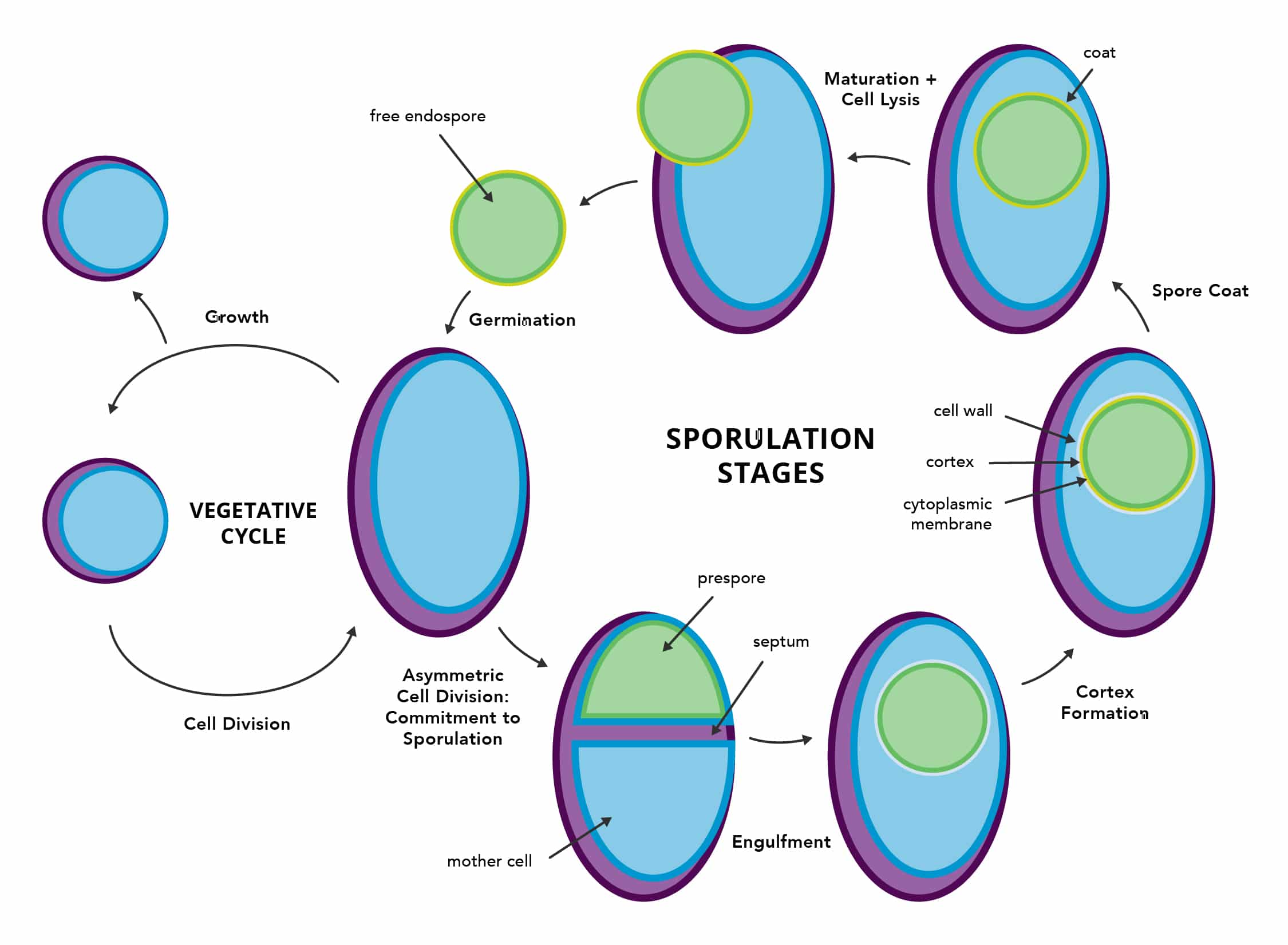Bacteria survive in some of the toughest environments on Earth. One of the key ways it survives these harsh environments is its ability to form spores or Endospores. Mold and plant spores aid in reproduction. Endospores are similar in structure to mold and plant spores but serve to protect bacteria whereas spores in mold and plants aid in reproduction.
What is a spore?
Endospores are non-reproductive structures that form as a stress response in certain types of bacteria (Clostridium difficile, for example). Endospores protect bacteria from unfavorable environmental conditions. The spore state of bacteria is resistant to ultraviolet radiation, desiccation, high temperature, extreme freezing, and chemical disinfectants. Because of this durability, bacteria can live exceptionally long in this dormant stage. Some species that have been found viable are 40 million years old. (Cano, 1995) When environmental conditions are favorable again, bacteria can “wake up” and start to perform normal metabolic and reproductive functions. When pathogenic bacteria “wake up” it can be especially dangerous to human health and is certainly a food safety risk.

How do spores form?
When bacteria are starved of nutrients or detect other environmental stressors, it starts the process of sporulation. In short, a cell divides in two within itself, creating identical (for now) copies. One copy begins to toughen the outer membrane layer to become the spore. The other cell envelopes the new spore to protect it while it’s still strengthening the endospore wall called the forespore. When this process is complete, the outer cell decays and releases the endospore, which is now protected from a wide range of threats. Once the endospore detects a suitable environment to grow again, it dissolves the protective layer and goes through normal cell growth and reproduction.
What food industries do spore-forming bacteria affect?
The most problematic genus when it comes to foodborne pathogens is Clostridium.
Clostridium botulinum produces botulinum toxin and causes botulism. It affects mainly the canning and meat and poultry industries.
Clostridium perfringens is one of the most common causes of food poisoning in the U.S. Infections with this type of bacteria can cause necrosis and gangrene. It affects mainly the meat and poultry industries
Clostridium difficile produces multiple toxins, causing diarrhea and inflammation in humans. It can be antibiotic-resistant as well making it very difficult to treat in very young or immunocompromised patients. This bacterium can affect multiple industries, from dry infant formula to meat. The spore has a high tolerance to heat and dry environments, making control difficult.
How to treat spore-forming bacteria?
The endospore’s general resistance to common chemicals such as alcohols, quaternary ammonium compounds and detergents, as well as its resistance to physical factors such as high heat or low water activity make it very difficult to implement an effective control plan. It is best to target bacteria before it enters a spore form, if possible, and use disinfectants and chemistries ideally suited for spore-forming pathogen control. Bleach is effective against endospores only if it directly contacts the organism. If a surface can easily be cleaned by hand scrubbing, biofilm is easily controlled and bleach can be a good tool to prevent spore-forming bacteria. For areas that are not easy to reach or for total plant protection, Sterilex PerQuat liquids can remove biofilm, which may house spore-forming bacteria as well as reducing spore-forming bacteria before it has a chance to form the endospore.
The content provided on this website is provided for informational purposes only and does not supersede the product label requirements. Approved label claims may vary depending on geography, use site, organism, or other factors. Always refer to the product label for complete directions for use.”
Reference
Cano, R., & Borucki, M. (1995). Revival and identification of bacterial spores in 25- to 40-million-year-old Dominican amber. Science, 268(5213), 1060-1064. doi:10.1126/science.7538699